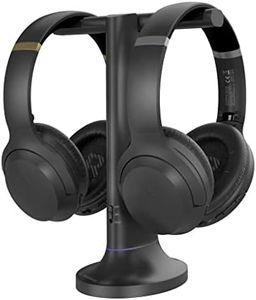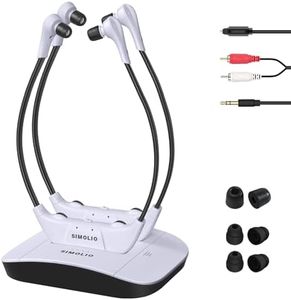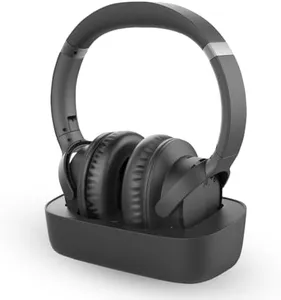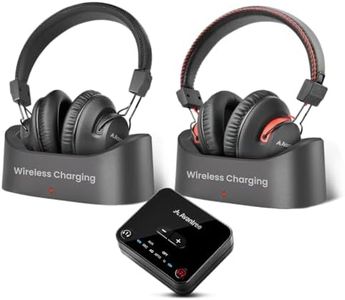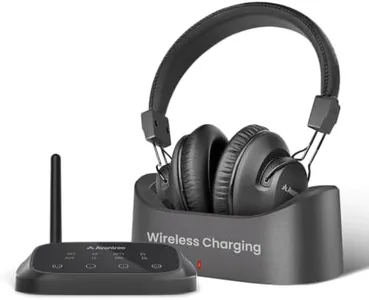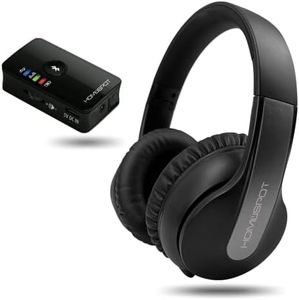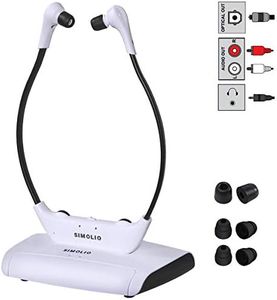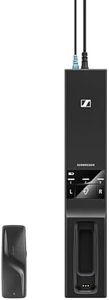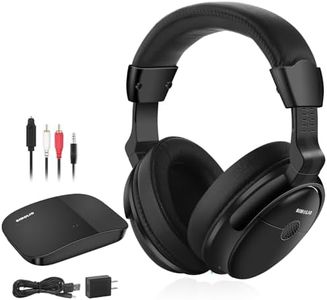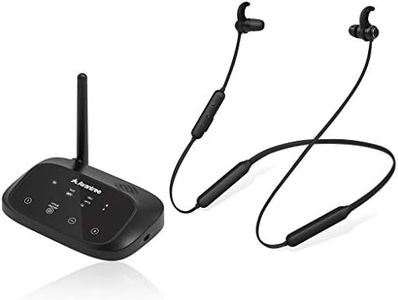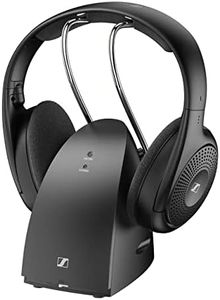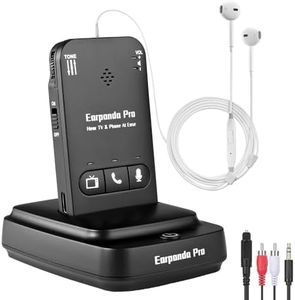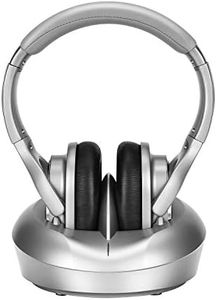We Use CookiesWe use cookies to enhance the security, performance,
functionality and for analytical and promotional activities. By continuing to browse this site you
are agreeing to our privacy policy
10 Best TV Headphones For Hearing Impaired
From leading brands and best sellers available on the web.Buying Guide for the Best TV Headphones For Hearing Impaired
Choosing the right TV headphones for someone with hearing impairment is all about focusing on features that enhance sound clarity, comfort, and ease of use. TV headphones made for this purpose can help people catch dialogue more clearly, reduce background noise, and provide a listening experience tailored to their specific hearing needs. You’ll want a product that not only delivers clear audio but is also simple to set up and comfortable for long sessions of watching TV.Sound Clarity and Speech EnhancementSound clarity refers to how well the headphones can make every detail in TV audio crisp and distinguishable, especially the human voice. For people with hearing impairment, it's important because it helps separate dialogue from background music or effects. Some headphones offer specific features like dialogue enhancement or speech amplification modes that make voices stand out more. When comparing models, look for those with built-in speech boost or clarity modes. If you have difficulty following conversations, prioritize a model that highlights voice frequencies or offers separate sound modes for dialogue.
Wireless Technology and RangeTV headphones often connect to your television wirelessly, using technologies like radio frequency (RF), Bluetooth, or infrared. Wireless connectivity is important for freedom of movement and comfort, as it eliminates cords that might get in the way. RF usually provides a larger range and is less prone to delays, while Bluetooth is convenient if your TV supports it. Infrared needs direct line-of-sight. Think about your room layout and how far you'll be from the TV; if you want to walk around or sit far from the screen, look for headphones with a greater range and reliable signal.
Ease of Use and ControlsHeadphones for the hearing impaired should be easy to operate, with large buttons or simple controls so you can quickly adjust the volume or change sound modes. Some come with base stations that double as charging docks and offer one-touch pairing, while others connect directly and may have controls on the earcups. If the user isn't comfortable with small buttons or complex menus, prioritize headphones with straightforward, tactile controls that are easy to see and feel.
Comfort and FitComfort is key, especially for longer TV sessions. Headphones vary in style—some are over-ear, some on-ear, and others in-ear. Over-ear is often best for isolation and comfort, but can feel warm after a while. In-ear styles are lighter but may be less comfortable for long use. If you wear hearing aids, look for headphones that won’t interfere, such as under-the-chin stethoscope designs. Choose a fit that won’t cause discomfort after extended use and, if possible, try on different styles to see which feels best.
Volume and Balance AdjustmentAdjustable volume is a basic but critical feature, but some headphones also offer left/right balance controls. This is particularly useful if hearing loss is more severe in one ear than the other, allowing you to make one side louder as needed. Check if the model lets you tailor volume for each ear independently. If you have asymmetrical hearing loss, prioritize models with customizable left/right audio balance.
Battery Life and Charging ConvenienceSince TV headphones are usually used for long sessions, battery life is important so you don't have to recharge frequently. Some models can last up to 20 hours or more on a single charge, while others might need more regular charging. Charging options include simple USB cables or docking stations. If you want minimal hassle, pick a model with a straightforward charging solution and a battery that can handle your typical TV viewing sessions without running low.
CompatibilityNot all headphones work with every TV, especially older models that don’t have Bluetooth. Some headphones include base stations that connect to your TV via a headphone jack, RCA or optical output. Before buying, check what audio outputs your TV has, and make sure the headphones you consider can connect easily. If you want a plug-and-play experience, make compatibility with your TV a priority.
